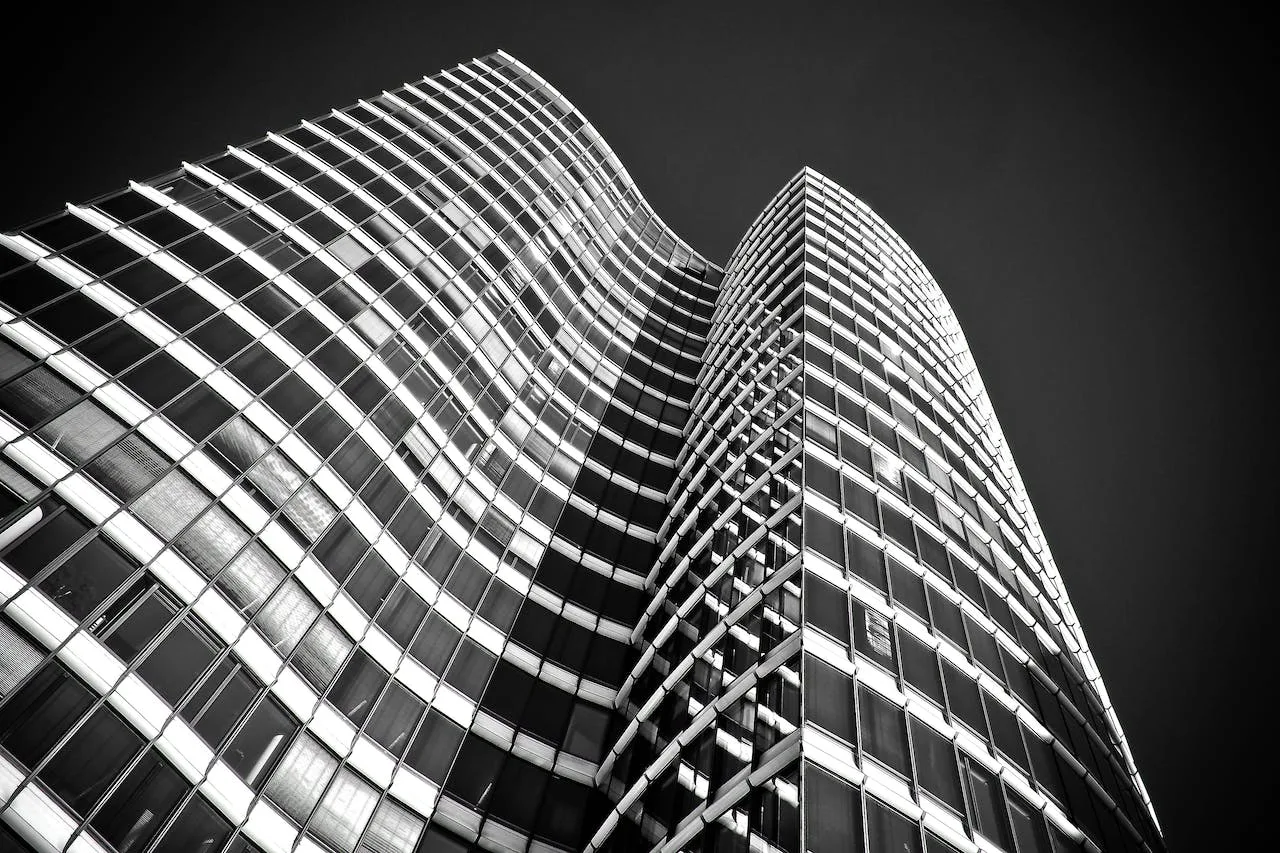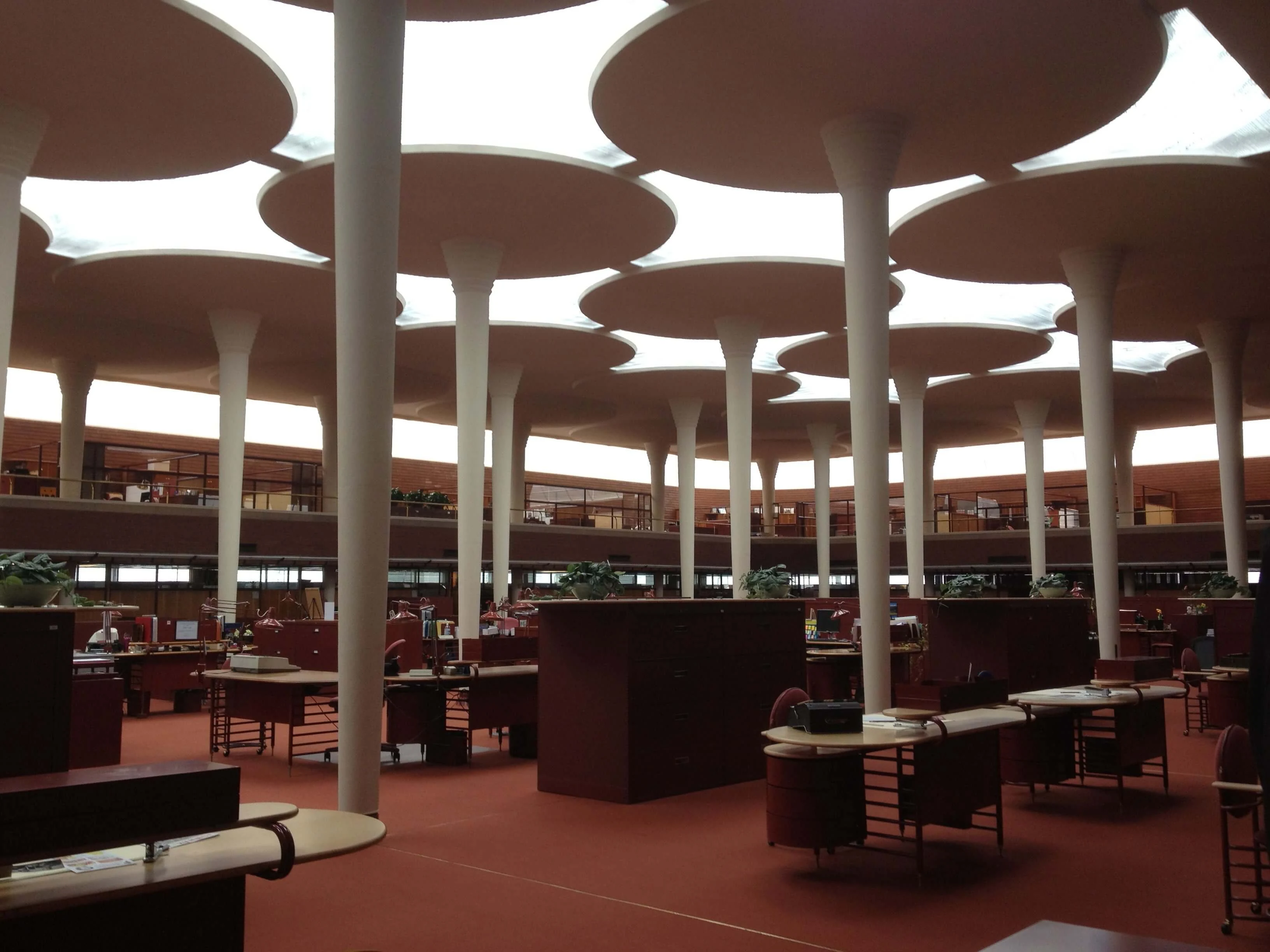Top 5 Iconic Commercial Architecture Buildings by Frank Lloyd Wright
Find the Brilliance of Frank Lloyd Wright's Commercial Architecture
Frank Lloyd Wright, an American architect, is renowned for his innovative and visionary designs that have left an indelible mark on the world of architecture. Born in 1867, Wright's career spanned more than seventy years, during which he created a diverse range of private, commercial, and public buildings. His architectural style, known as "organic architecture," was characterized by a harmony between the built environment and the natural world.
In fact, his projects looked to coordinate designs with their environmental elements, utilizing natural materials, accentuating even lines, and integrating open floor designs that flowed consistently from one space to another.
Wright had confidence in creating buildings that supplemented and upgraded their regular settings, frequently using standards like mathematical shapes, cantilevered overhangs, and broad utilization of glass to bring the outside inside while keeping a feeling of unity and balance.
 |
| There are various kinds of commercial architecture, among them the office skyscrapers. Photo by Pixabay |
Frank Lloyd Wright is widely regarded as one of the greatest pioneers in commercial, as well as organic architecture. His emphasis on integrating buildings with nature, maximizing natural light, and creating agreeable spaces pushed the boundaries of what was possible in commercial architecture and elsewhere.
In this blog post, we will discover his innovative designs and visionary approach that have revolutionized the way architects perceive and create commercial spaces, while exploring organic architecture in the next post.
The Significance of Commercial Buildings in Frank Lloyd Wright's Work
While Wright's residential designs are generally praised, his commercial buildings are similarly critical and merit acknowledgment. Wright agreed that commercial architecture should not be devoid of beauty and artistry. All things being equal, he tried to create commercial spaces that were utilitarian as well as outwardly dazzling, mirroring his conviction that architecture ought to improve the human experience.
The Enduring Legacy of Frank Lloyd Wright's Commercial Architecture
Frank Lloyd Wright's commercial buildings continue to enchant and rouse architects and architecture lovers around the world. His visionary designs, creative utilization of materials, and unique ways of dealing with commercial spaces have made a permanent imprint on the field of architecture. Every building remains a demonstration of Wright's genius and gives a brief look into the brain of one of the greatest architects of the 20th century.
His commercial buildings significantly affected the architectural scene. Additionally, his accentuation on incorporating buildings with nature, amplifying natural light, and creating amicable spaces changed how architects moved toward commercial activities. His impact should be visible in crafted by endless architects who keep on drawing motivation from his visionary designs and concepts.
Discover the Top 5 Iconic Commercial Buildings by Wright
For architecture fans and admirers of Frank Lloyd Wright, visiting his iconic commercial buildings is a potential chance to observe his virtuoso firsthand. These buildings have become architectural milestones and are available to the general population, permitting guests to encounter the beauty of Wright's designs.
1-The Guggenheim Museum: A Commercial Architecture Work of Art
Situated in New York City, the Guggenheim Gallery is an architectural wonder and perhaps one of Wright's most notable works. Its extraordinary spiral design and utilization of organic shapes make a harmonious flow of space, allowing visitors to experience art in a truly immersive environment.
It is one of Frank Lloyd Wright's most presumed commercial buildings: Finished in 1959, the exhibition hall is a magnum opus of present-day architecture. Its extraordinary spiral plan, inspired by the state of a shell, challenges customary ideas of museums' architecture.
The inside space, with its ceaseless incline, gives a consistent stream to guests to investigate the shows. The Guggenheim Gallery remains a testament to Wright's capacity to create dazzling commercial spaces that push the limits of conception.
 |
| The most renowned masterpiece of Frank Llyod Wright ever: The Solomon R. Guggenheim Museum, Image by scott2293 from Pixabay |
2- Fallingwater House: A revolutionary design in commercial architecture
Nestled in the Pennsylvania countryside, Fallingwater is considered Wright's most famous residential commission. Built over a waterfall, this masterpiece seamlessly blends with its natural surroundings, showcasing Wright's ability to integrate nature into his designs.
Another groundbreaking commercial building by Frank Lloyd Wright is the Fallingwater House in Pennsylvania. Completed in 1939, Fallingwater is a residential property, but its creative design and integration with nature make it a critical illustration of Wright's approach to commercial architecture. Wright's utilization of cantilevered overhangs and extensive windows creates a feeling of weightlessness and brings the excellence of the outside into the living spaces.
3- Johnson Wax Headquarters: Innovative utilization of materials in commercial architecture
Situated in Racine, Wisconsin, the Johnson Wax Headquarters is a demonstration of Wright's development in commercial architecture. The structure's famous lily cushion segments and sweeping open spaces exhibit his capacity to establish utilitarian yet tastefully satisfying workplaces.
 |
| Johnson Wax Headquarters project in Wisconsin, Photo source: img.washingtonpost.com |
 |
The structure's famous lily cushion segments and sweeping open spaces exhibit his capacity to establish utilitarian yet tastefully satisfying workplaces. Photo source: i.pinimg.com |
The building is a testament to Wright's innovative use of materials in commercial architecture. Completed in 1939, the building features a unique combination of glass and brick, creating a stunning visual contrast. The roof, made of translucent Pyrex glass tubes, allows natural light to flood the interior spaces while providing a sense of openness. This innovative design not only enhances the working environment but also showcases Wright's ability to think outside the box in architecture.
4- Larkin Administration Building: An extraordinary way to deal with commercial architecture
Although it no longer stands today, the Larkin Administration Building in Buffalo, New York, was a groundbreaking project by Wright. Its open-plan design and efficient use of space revolutionized office design and set another norm for present-day commercial buildings.
Wright's way of dealing with commercial architecture should be visible obviously in this architectural venture. Finished in 1906, the structure was intended to oblige the regulatory workplaces of the Larkin Cleanser Organization.
His plan shone on expanding normal light and making an open and proficient work area. The building featured an atrium at its center, surrounded by offices and workspaces, allowing employees to benefit from natural light and a sense of connection with nature. This unique approach to commercial architecture was ahead of its time and set a new standard for office design.
5- Imperial Hotel: Blending traditional and modern elements in commercial architecture
The Imperial Hotel in Tokyo, Japan, is a prime example of Frank Lloyd Wright's ability to mix customary and present-day components in commercial architecture. Finished in 1923, the hotel joined Western architectural standards with customary Japanese plan components. The structure's unmistakable rooftop, propelled by the state of a samurai head protector, consistently coordinated with the encompassing surroundings.
Wright's design showcased his deep respect for cultural traditions while embracing modern innovations. Despite surviving a devastating earthquake, the hotel stood as a testament to Wright's structural integrity and innovative design.
Visiting Frank Lloyd Wright's iconic Commercial Buildings
For architecture enthusiasts and admirers of Frank Lloyd Wright, visiting his iconic commercial buildings is an opportunity to witness his genius firsthand. The Guggenheim Museum, Fallingwater, the Johnson Wax Headquarters, the Larkin Administration Building, and the Imperial Hotel referred to above, are all open to the public, allowing visitors to experience the brilliance and splendor of Wright's designs.
These buildings stand as testaments to his enduring legacy and provide a glimpse into the mind of one of the greatest architects of the 20th century.
The impact of Frank Lloyd Wright's commercial buildings on architecture
Wright's commercial buildings have significantly affected the field of architecture. His inventive designs and novel ways to deal with commercial spaces tested regular standards and pushed the limits of what was conceivable.
His accentuation on incorporating buildings with nature, amplifying natural light, and creating amicable spaces changed how architects moved toward commercial activities. His impact should be visible in crafted by endless architects who keep on drawing motivation from his visionary designs.
Last Thoughts and Considerations
Wright's commercial buildings continue to enthrall and rouse architects and admirers of architecture's visionary concepts, creative materials, and novel ways to deal with commercial spaces. He has made a permanent imprint on the field of architecture.
From the Guggenheim Museum to Fallingwater, every building grandstands Wright's capacity to mix usefulness with magnificence, making spaces that go the distance. As we proceed to appreciate and concentrate on crafted by Frank Lloyd Wright, we gain a more profound comprehension of the effect his commercial buildings have had on the architectural scene. His legacy will continue to shape the future of commercial architecture and inspire generations to come.
.png)






